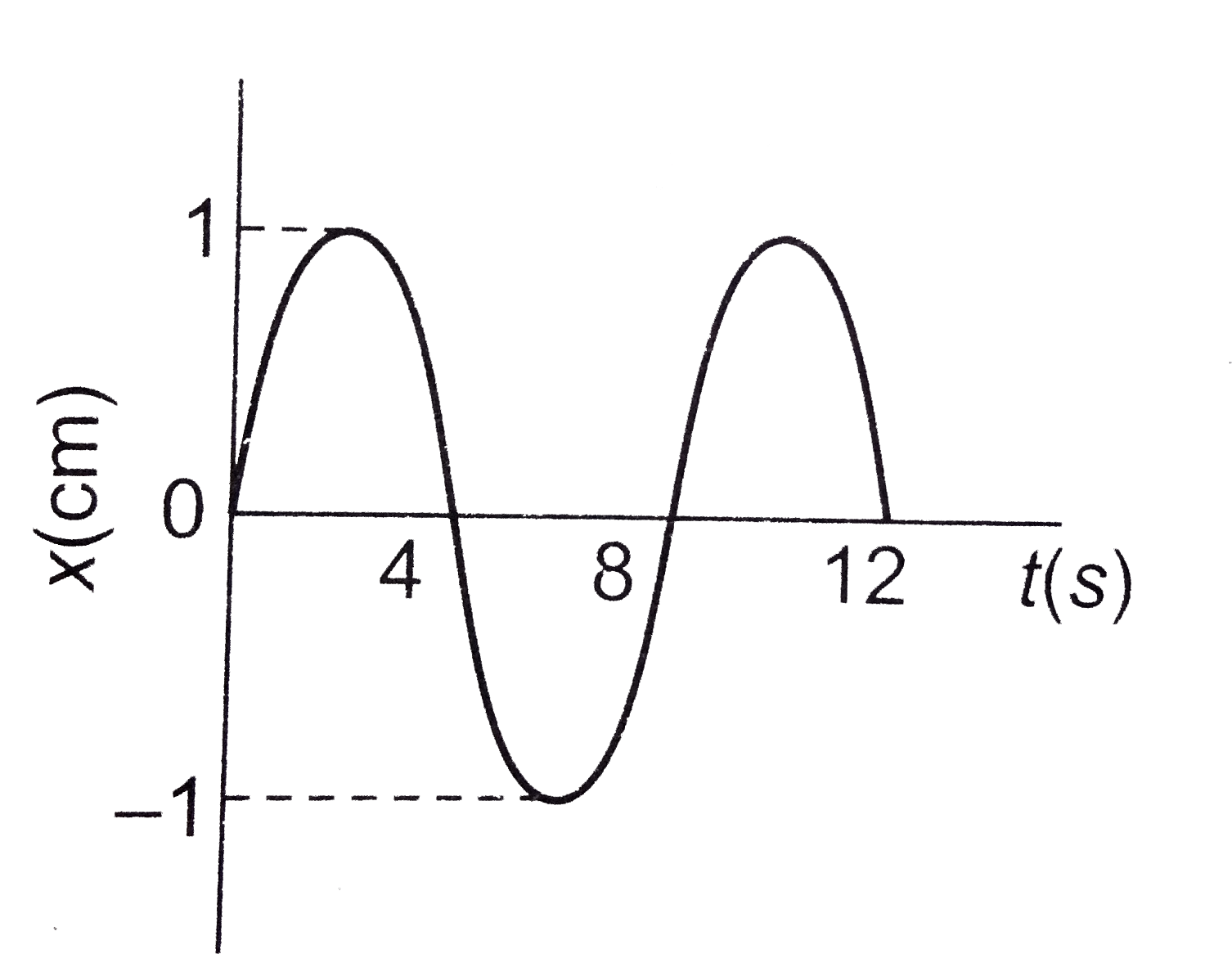Two simple harmonic motions as shown below are at right angles .They are comibined to form Lissajous figures
x(t)=Asin(at+δ)
y(t)=Bsin(bt)
Identify the correct match below
Parameters: A = B, a = 2b, δ=π2, Curve : Circle
Parameters: A = B, a = b, δ=π2, Curve: Line
Parameters: A≠B,a=b,δ=π2, Curve: Ellipse
Parameters: A≠B,a=b,δ=0, Curve: Parabola
The correct Answer is:C
From the two mutually perpendicular S.H.M..s, the general equation of Lissajous figure,
x2A2+y2B2−2xyABcosδ=sin2δ
x=Asin(at+δ) y=Bsin(bt+r)
Clearly A≠B hence ellipse.
Topper's Solved these Questions
- OSCILLATIONS BOOK - DISHA PUBLICATIONCHAPTER - OSCILLATIONS EXERCISE - Exercise-1 : Concept Builder (TOPIC 1: Displacement, Phase, Velocity, Acceleration and Energy in S.H.M.)
27 Videos
- OSCILLATIONS BOOK - DISHA PUBLICATIONCHAPTER - OSCILLATIONS EXERCISE - Exercise-1 : Concept Builder (TOPIC 2: Time Period, Frequency, Simple Pendulum and Spring Pendulum)
31 Videos
- NUCLEIBOOK - DISHA PUBLICATIONCHAPTER - NUCLEIEXERCISE - EXERCISE - 2 (CONCEPT APPLICATOR)
30 Videos
- PHYSICAL WORLD, UNITS AND MEASUREMENTSBOOK - DISHA PUBLICATIONCHAPTER - PHYSICAL WORLD, UNITS AND MEASUREMENTSEXERCISE - Exercise - 2 : Concept Applicator
30 Videos
Similar Questions
Knowledge Check
The equation of S.H.M. isy=asin(2πnt+a), then its phase at time t is
A2πntBαC2πt+αD2πtThe equation of simple harmonic motion y=asin(2πt+α) then its phase at time t = 0s is
A2πntBαC2πt+αD2πtThe epoch of a simple harmonic motion represented by x=√3sinωt+cosωtmis
A30∘B40.3∘C60∘D25∘
Two simple harmonic motions act on a particle. These harmonic motions are x=Acosωt+δ,y=Acos(ωt+α) when δ=α+π2 , the resulting motion is
View SolutionThe x-t graph of a particle undergoing simple harmonic motion is shown below. The acceleration of the particle at t=23s is

View SolutionTwo simple harmonic motions are represented by the equations y1=2(√3cos3πt+sin3πt) and y2=3sin(6πt+π6)
View SolutionTwo simple harmonic motions act on a particle. These harmonic motions are
x=Acos(ωt+δ),y=Acos(ωt+α)
When δ=α+π20, the resulting motion is
View SolutionThe x-t graph of a particle undergoing simple harmonic motion is shown below. The acceleration of the particle of t=4/3s is

View Solution
